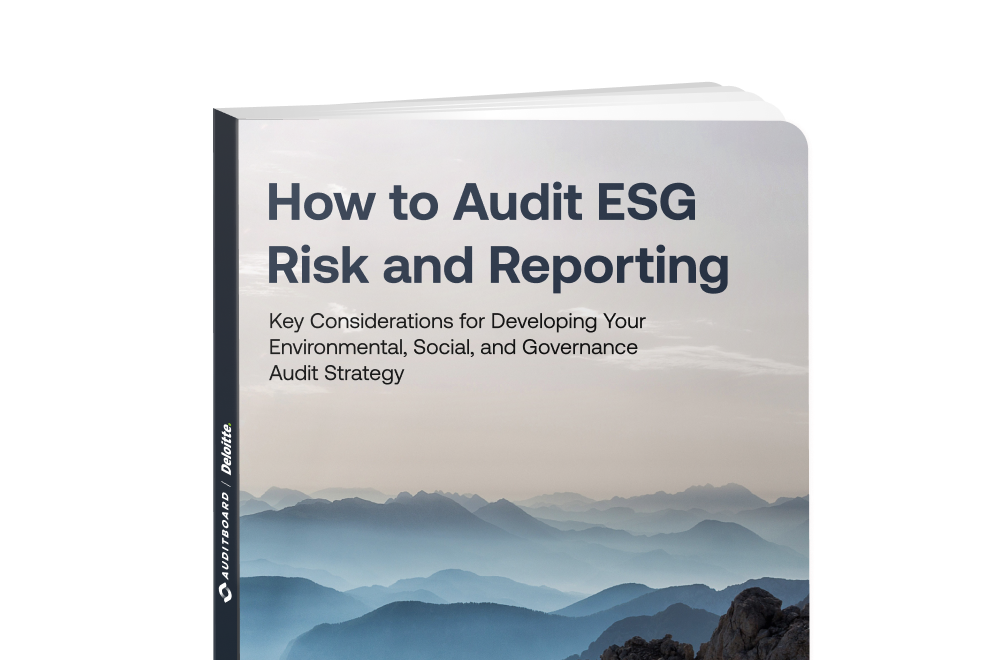There are ever-increasing examples that environmental, social, and governance (ESG) risk is being directly tied to business performance. Gartner pinpoints ESG as a top-ten risk area for internal audit department focus in 2022, while over the past two years, double the institutional investors have committed to investing responsibly. Additionally, regulators in the U.S. and globally are beginning to draft and implement more formal ESG performance standards.
Yet, many stakeholders are going a step further, pushing businesses to embrace ESG for value creation.
AuditBoard and Deloitte’s new guide, How to Audit ESG Risk and Reporting: Key Considerations for Developing Your Environmental, Social, and Governance Audit Strategy, explores how auditors can help their businesses better manage and report on ESG risk — and encourage them to embrace ESG for its value-creating potential.
Download the full guide for key takeaways and findings, including:
- Trends in the ESG landscape, including how businesses fare in ESG readiness.
- Common approaches to integrating ESG risk and reporting in internal audit plans.
- Key questions to ask for a risk-based approach to auditing ESG.



